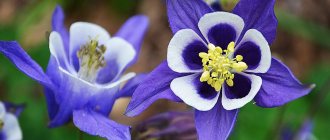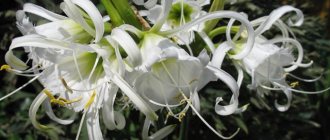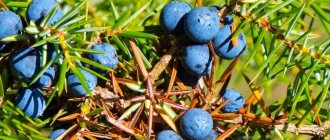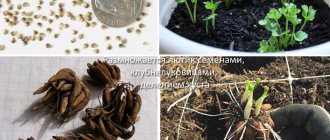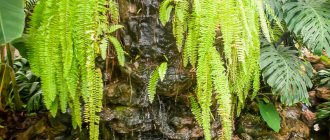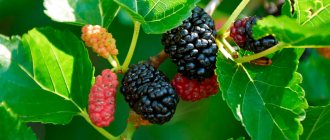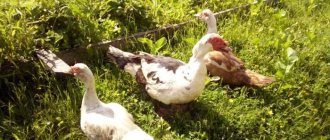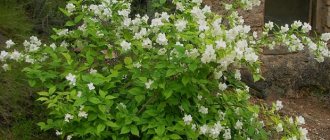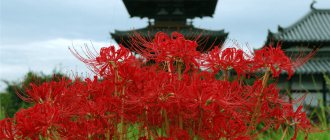Description of buttercup
Acrid buttercup is the most common among other representatives of the ranunculaceae. It grows almost throughout the entire territory of Russia, except for the Far North and South, both in forests and meadows, and in various wastelands, fields, landfills, roadsides, vegetable gardens, etc.
Buttercup caustic
It blooms in late spring and early summer with small yellow flowers, with five leaves, 1-2 cm in diameter. It can grow from 30 to 100 cm in length. The leaves are mainly located at the top and have ribbed sides. The root system is well developed. This is a perennial plant.
Buttercup is a poisonous plant.
Types and varieties
In garden culture, the most commonly grown buttercup is garden buttercup , or hybrid , or Asian buttercup , or Asian ranunculus (Ranunculus asiaticus). This popularity is caused by the variety of forms and rich color palette of varieties and hybrids of this species. In addition, Asian buttercup is an excellent cut flower.
All varieties and forms of this species are divided into four groups according to the shape of the flowers:
- turban-shaped or African buttercup, densely double, the shape of the flower resembles a ball;
- French buttercup, semi-double, which has only two rows of petals;
- Persian buttercup, low-growing with simple or semi-double flowers;
- peony-shaped buttercup, double, with large flowers.
Popular varieties: Bloomingdale Rose Bicolor - double white buttercup with pink edges of the petals; Purple Picoti - white buttercups with purple dusting at the tips of the petals; Double Pink Buttercup is a densely double variety with tightly adjacent pink petals.
Also grown in culture:
- Fieldfare: growing in the garden, types and varieties
Buttercup (Ranunculus aconitifolius)
Up to a meter high, blooming with white flowers. There is a double variety and a variety with golden yellow flowers;
Buttercup (Ranunculus anemonifolius)
Yellow buttercup up to 30 cm tall, there is a white-flowered form;
Buttercup (Ranunculus acris)
Only double forms of the species with large flowers of different shades of yellow are grown in culture.
Of the wild species that attract attention are Kamchatka buttercup, Illyrian buttercup, sulfur-yellow buttercup, Haast buttercup, Alpine buttercup, Altai buttercup, Pyrenees buttercup and Gray's buttercup.
Description of poisonous buttercup
Poisonous buttercup is small in size (length 20-45 cm), the leaves are large, fleshy, located along the entire stem. The flowers are very small, light yellow, forming a box in the middle of the petals in which the seeds ripen. Unlike buttercup, it fades quickly, in early summer.
Poisonous buttercup
Poisonous buttercup grows in moist soils: in swamps, near rivers and lakes, ponds, in places protected from light. It is an annual plant that dies after flowering.
Nearby you can often see creeping buttercup - another representative of the genus. It is also poisonous like the herbs described above, but is rarely used in folk medicine. Externally, the flowers are similar to caustic buttercup, but its stems spread along the ground and do not grow upward.
Creeping buttercup
Self-growing from seeds
Ranunculus can reproduce by seeds. But since their viability is very short, it is almost impossible to get good seeds at home. The easiest option is to purchase them at a flower shop. It can be creeping buttercup, Asian ranunculus, or any other varieties. Usually they write on the packaging what color the buttercups should turn out.
It is better to purchase buttercup seeds in a store than to collect them yourself.
Planting of buttercups begins in March - the seeds are planted in a peat mixture with the addition of sand. The filled grains are moistened with a spray and covered with film. For the buttercup plant to sprout, maintain a temperature of 10-12 degrees Celsius. The film is periodically raised for ventilation.
After planting the buttercup seeds in the ground, the first shoots appear within a few weeks. By moving the container to a warmer location, better growth can be achieved. In addition, all seedlings need plenty of sunlight. Placing the box on a south window would be the best option.
Since the ground is still cold in April, buttercups grown from seeds are planted in open ground in mid-May.
Where are buttercups used?
Unlike generally accepted plants that are used by both official and non-traditional medicine (for example, hawthorn fruits, oak bark, chamomile flowers, etc.), caustic buttercup and poisonous buttercup are classified as dangerous (like fly agaric, crow's eye and other similar plants), and doctors do not recommend any contact with them, much less treatment.
However, in the practice of folk healers and herbalists, buttercups are actively used.
Use in folk medicine
The main application points for buttercup and other ranunculaceae are dermatology, rheumatology, gastroenterology, dentistry, and surgery.
Valuable for pharmacological use are the vitamins contained in buttercups, a large group of alkaloids, saponins, coumarins, flavonoids, and tannins.
Related article: Green stool in an adult - why?
The dosage form used is juice (externally only), decoction, alcohol tincture from dried raw materials, dried leaves crushed into powder (externally as a powder).
Diseases and conditions for which buttercup is used
- Various inflammatory diseases: from gynecological to surgical.
- Non-healing wounds, trophic ulcers, corns, warts, papillomas, boils.
- Scabies.
- Mycoses.
- Radiculitis, osteochondrosis, arthrosis and arthritis.
- Pulmonary diseases: bronchial asthma, pneumonia, pleurisy, chronic cough.
- Swelling.
- State of weakness, weakness, dizziness, headache.
- Pain in gums, teeth.
- There is evidence of the anti-cancer properties of buttercup.
- In most cases, treatment is applied externally.
Infusion, tincture, ointment and buttercup juice
Oriental healers, Russian healers and northern shamans prepare medicines from buttercup. It is safe to say that this medicinal plant has been carefully studied for a long time. Treatment with buttercup is relevant for skin inflammations, pain syndromes of various etiologies, neuralgia and joint damage, colds and oncology. The main thing is to choose the right dosage form.
Water infusion
The most commonly used form is a water infusion, since making a decoction of buttercup is technically incorrect, because when boiled, most of the biologically active substances evaporate from it. You can boil the buttercup for a maximum of five minutes, but it’s better to just steam it with boiling water, wrap it and let it sit. The infusion time should not be too long; it is optimal to keep the raw material in the medicine for 30-60 minutes, and then filter thoroughly, since over a longer period too many toxic alkaloids will pass into it.
The classic recipe for buttercup infusion looks like this: a teaspoon of dry raw material is poured with half a liter of boiling water, kept warm for half an hour, filtered and used to disinfect wounds, eliminate parasites and fungi, or a tablespoon orally three times a day to treat internal diseases. You can also rinse your mouth with buttercup infusion for bleeding gums, gingivitis and periodontal disease - the inflammation will subside within a week.
Alcohol tincture
We will not provide a recipe for an alcohol tincture for the treatment of cancer here, since this is a dangerous and complex technique that requires a lot of experience and precision. But the external use of buttercup tincture is quite safe and useful for many diseases.
Take 50 fresh buttercup flowers, pour in half a liter of medical alcohol, seal the glass container tightly and keep the medicine in a cool, dark place for 21 days, shaking occasionally. Then filter and use for warm compresses, rubbing and disinfection of wounds.
Healing ointment
To prepare the ointment, take fresh buttercup flowers, grind them and mix with lard (pork fat) in a ratio of one to four. Store buttercup ointment in the refrigerator in a tightly closed glass jar.
This is an excellent remedy for colds - just rub buttercup ointment on your chest and back and wrap yourself in a warm scarf to relieve a cough and sleep peacefully throughout the night if you have bronchitis. You can apply this ointment to a sore throat, to inflamed lymph nodes, and to muscles chilled by a draft, but be sure to wrap the sore spot to enhance its healing effect.
Juice
Freshly squeezed buttercup juice can remove warts, as well as relieve painful toothache if a cotton wool soaked in it is briefly applied to the gum. Strongly diluted buttercup juice is used to treat cataracts at an early stage: to do this, you need to wipe the sore eyes 3-4 times a day.
Fresh buttercup juice is a very caustic substance that, with prolonged contact, causes burns of the skin or mucous membranes, ulceration or even necrosis of the epidermis.
Buttercup poisoning
The main toxic substance in the Ranunculaceae genus is protoanemonin. It is found in all parts of the plant, including the root. Its main toxic effect is irritation of the walls of the mucous membranes.
At high concentrations, toxic protoanemonin can penetrate the blood and cause disruption in the functioning of organs, primarily the kidneys, liver and heart.
Symptoms of poisoning
The brightness, completeness and number of symptoms depend on the age of the victim, the amount of poison in the body, and the presence of chronic diseases.
After contact with skin:
- itching;
- redness;
- pain, especially sharp and severe in the presence of small wounds or on the oral mucosa; blistering of the skin;
- maturation.
If inhaled:
- runny nose;
- cough;
- profuse lacrimation, redness of the eyes.
In case of eye contact:
- burn of the cornea and decreased visual acuity, possible temporary loss (irreversible in severe cases);
- itching in the eyes;
- redness of the eyes.
If you swallow buttercup parts:
- diarrhea;
- stomach ache;
- nausea and vomiting;
- weakness, loss of consciousness.
If the dosage is exceeded during treatment, a large amount of buttercup is taken orally, the victim is a child or elderly, the presence of other risk factors may be observed:
- convulsions;
- heart rhythm disturbances;
- tachycardia or bradycardia;
- loss of consciousness;
- trembling in the limbs;
- painful urination or retention;
- confusion, hallucinations.
First you need to determine whether a person was poisoned by a poisonous buttercup or not.
Similar symptoms occur if oleander is eaten. The latter has larger, almost white flowers. It also very quickly leads to cardiac dysfunction, and when poisoned in large doses, it almost immediately leads to death.
Oleander
Symptoms of buttercup poisoning in animals
Typically, farm animals are able to distinguish buttercup from other grasses and do not eat it. Hay stored for the winter with this plant is also safe.
Related article: What to do if you have food poisoning in an adult? Symptoms and treatment at home
Pets may develop symptoms such as:
- lacrimation;
- spasm of the larynx;
- bloating;
- lethargy or, conversely, excessive atypical activity;
- refusal to eat;
- cramps and trembling in the body;
- frequent bowel movements;
- salivation;
- in ruminants - disappearance of chewing gum in the mouth;
- the appearance of blood in the urine.
Composition and properties of buttercup
All types of buttercup contain the following biologically active substances:
- Protoanemonin is a volatile poisonous alkaloid with a sharp characteristic odor and bitter, pungent taste. A small amount of protoanemonin has a healing effect on the human body: it tones, stimulates the nervous system, increases immunity, kills microbes, increases the level of red blood cells and hemoglobin in the blood. And in large doses it is a powerful plant poison with a nerve-paralytic effect, causing death from depression of the respiratory center;
- Coumarins are natural anticoagulants, which also accelerate cellular regeneration processes, act as a source of vitamin P, and prevent the growth of tumors and the formation of blood clots;
- Cardiac glycosides are substances that normalize cardiac activity, slow down the rhythm of contractions of the heart muscle during tachycardia, increase systole and lengthen diastole, activate blood circulation and reduce blood pressure;
- Saponins – work as a choleretic agent, and also reduce temperature and pressure, thin mucus and accelerate its removal from the bronchi, tone and stimulate the reproductive system;
- Tannins – narrow and strengthen the walls of blood vessels, create a thin protective film on the mucous membrane of the digestive tract after ingestion, and on the surface of the skin when applied externally;
- Alkaloids are a group of volatile toxic compounds that, in small doses, stimulate the immune system, tone, relieve fever, relieve pain, lower blood pressure, strengthen the walls of blood vessels, stop bleeding and disinfect wounds;
- Flavonoids are substances that prevent the destruction of valuable hyaluronic acid in the human body, and also stimulate metabolic processes, increase the elasticity of blood vessels, neutralize free radicals and prevent sclerotic damage to the circulatory system;
- Vitamin C is one of the most important vitamins for health, without which the normal functioning of the endocrine glands and the complete absorption of iron from food are impossible. Ascorbic acid is also an antioxidant, a cancer protector and an important element for maintaining the nervous system. Vitamin C deficiency has a detrimental effect on immunity and hematopoiesis;
- Carotene is a substance necessary for good vision, strong bones and teeth, elastic skin and beautiful hair. A lack of carotene in the body results in early aging, slower protein synthesis, the development of cancer and a slower process of cellular regeneration;
- Amino acids are the most important substances on which the quality of blood, hemoglobin level and the body’s ability to cleanse depend. The more valuable amino acids a person receives, the faster he gets rid of harmful components of food and air - pesticides, radionuclides, heavy metals;
- Vegetable oils nourish and rejuvenate tissues, normalize metabolic processes, accelerate cellular regeneration, neutralize carcinogens and prevent the appearance of malignant tumors.
Thus, buttercup has many beneficial properties:
- Tones;
- Pain reliever;
- Reduces temperature and pressure;
- Disinfects;
- Relaxes;
- Kills fungus;
- Protects against cancer;
- Increases sweating;
- Normalizes metabolic processes;
- Strengthens the immune system.
First aid
The victim must remove the poisonous plant from the body as quickly as possible. This is done by reflexively inducing vomiting: pressing on the root of the tongue.
A solution of potassium permanganate or baking soda (take it on the tip of a knife, dissolve it in a glass of warm water) can also provoke vomiting. Next, dissolve crushed activated carbon (1 tablet per 10 kilograms of weight) in a liter of warm water and also give it to drink.
Potassium permanganate (potassium permanganate) Baking soda Activated carbon
To protect against damage to the esophagus, stomach, and intestines by caustic components, you can give chemical gastroprotective agents (Almagel, Smecta) or natural ones: plain milk, egg whites, jelly, oat decoctions, sesame oil.
Almagel
Smecta
If a person has not swallowed poisonous plants, but has taken them with his hands and chewed them in his mouth, then he should thoroughly rinse the skin and mucous membranes of the mouth with cool water. If available, it is advisable to lubricate with anti-burn sprays (Panthenol, Olazol). It is advisable to suck on the ice, but if there is none, then simply rinse your mouth with cold water for 10 minutes.
Panthenol
Olazol Ice
If the juice of a poisonous plant gets into your eyes, wash them thoroughly with plain water and milk. You can drip antibacterial drops: Levomycetin, Sulfacyl sodium and others.
Levomycetin
Sulfacyl sodium
For allergy symptoms (redness of the skin of the body and face, swelling of the neck, itching, feeling of lack of air), take antihistamines (Loratadine, Suprastin).
Loratadine
Suprastin
If symptoms are observed in an animal, it should be taken to a veterinarian immediately.
For pain in the prehospital stage, painkillers should not be used. You can put cold on the place of unpleasant sensations: stomach, head, etc.
Planting process: propagation by rhizome
Before planting, you should carefully inspect the tuber. High-quality planting material is not damaged by fungus or mold. It is not brittle and is a little thick. There is no mechanical damage on it. It is best to store tubers in paper bags. Large tubers can be divided into several roots.
Planting buttercups involves preparing planting material. Root cones should be soaked in water with the addition of biostimulants. After soaking, the cones become large. They should not be buried more than five centimeters into the soil. At the same time, they are laid with the roots down. The gap between seedlings should not be less than ten centimeters. After this, the soil is watered, but only a little, so that the roots do not start to rot.
You can buy such tubers in a store or online. Garden buttercup is a heat-loving plant, the roots of which are dug up and stored. Tubers can be stored in pots with peat or wrapped in cloth. The temperature in the storage room should be at least 17 degrees. Plants are stored in September, when the rhizome dries out. During this period, it is pulled out of the ground and dried.
Propagation by seeds
In spring, buttercups can be sown with seeds in the garden. To do this, prepare a container for planting with sand. The top of the container is covered with glass so that there is a mini-greenhouse mode. Ventilation is necessary from time to time.
After the first shoots appear, the buttercup is transferred to a sunny, warm place. Buttercups should be planted in an open bed only when the seedling has at least three leaves. Seeds do not germinate well, and if the planting material was stored incorrectly, it may not germinate at all. Buttercup seedlings should be well looked after, ventilated on time and follow the watering regime.
The planted seeds do not always match the color on the label. As the buttercup grows, it may lose its decorative qualities. A planted bush will not bloom in the first year, but only in the second. When purchasing planting material, you need to pay attention to the harvest date. The varieties marked F1 grow best.
Popular: Two-meter clusters of medinilla from the Melastoma family
Planting in open ground
Holes are dug on the chest (flower bed) at intervals of 20 centimeters. A drainage layer is poured into it. Then the seedling is placed on top. Transshipment is carried out together with a lump of earth. Soil is poured into the hole, then the soil is compacted and watered.
Seedlings of garden buttercup and other types of buttercups do not bloom immediately in the first year after planting. But in the second season, flowers appear on the plants. It is important that the plant does not grow and does not “smother” other flowers with its presence.
Priming
Neutral or slightly acidic soil is suitable for this flower. In this case, the substrate should be nutritious and light.
Watering mode
The roots of the plant do not like to be flooded, but they also react sharply to dryness. In this regard, the buttercup should be watered correctly so that the soil moisture is optimal. You need to touch the soil with your hands to make sure that it is not dry or flooded.
When the substrate is dry, water the flower. To prevent stagnation of moisture, a drainage layer of expanded clay or pebbles is made at the bottom of the hole. When flowering ends, the buttercup should be watered less. Watering should not be frequent or abundant. When flooded, the plant begins to rot and die.
Treatment
In a specialized hospital, the patient is prescribed symptomatic therapy, because poisonous buttercup does not have a specific antidote.
- Gastric lavage using a nasogastric tube.
- Restoring normal water-salt balance by administering solutions of sodium chloride, rheopolyglucin, glucose, acesol intravenously.
- Treatment of manifestations of the effects of a poisonous plant: restoration of heart rhythm (antiarrhythmic drugs), increased blood pressure (caffeine, adrenaline), plasmapheresis, dialysis (for renal failure), hepatoprotective agents (for liver failure).
- The use of antitoxic agents: Unithiol, Thiosulfite and sodium hyposulfite.
- For toxic shock, allergies: glucocorticosteroids, diuretics.
- If seizures occur, use anticonvulsants (Phenazepam, Relanium, Diazepam, Carbamazepine).
- If the victim is delivered in serious or extremely serious condition, he is placed in the intensive care unit and connected to a ventilator.
- Vitamin therapy.
Related article: Green stool in an adult - why?
Options for using garden buttercup in landscape design
Garden buttercups are the most common species of the ranunculaceae family, which are most often grown as ornamental plants when decorating homestead and garden areas. The decorative perennial in mixborder compositions combines very harmoniously with plants such as anemones and scabiosa.
Arabis and alyssum will serve as an excellent addition. Tall varieties are recommended to be planted in the central part of the flower bed or as a background for low-growing crops. A composition with miniature types of violets, daisies or aubrieta will be spectacular. Mixes of low-growing varieties are grown in container culture.
Preventive measures
Attention should be paid to children, since they are characterized by active exploration of the world through plucking plants that can potentially be life-threatening. And it doesn’t matter whether you’re walking in the forest or not, poisonous buttercups can be found everywhere.
When going outdoors far from the nearest hospital, you should take with you a first aid kit containing first aid supplies.
It is worth explaining to children that they should not eat any berries, leaves, or stems they encounter without an adult’s permission.
If you need poisonous buttercup as a traditional medicine, study its description so as not to confuse it with other plants. Also, be sure to consult your doctor, especially regarding the recipe, dosage, and possible contraindications. When collecting plants, you need to wear rubber gloves, preferably closed clothing and glasses.
When collecting any medicinal plants, you should first study their description in a botanical atlas. It would be even better to buy ready-made forms at the pharmacy or go to the preparation with an experienced person.
You should not collect bouquets of plant flowers. Their presence in confined spaces can lead to headaches, allergies, and poisoning in weakened or elderly people.
How to prepare the soil
In the fall, the place where buttercups will be planted is carefully dug up and fertilized with manure. If you can’t get fertilizer, compost will do. Too wet soil in the spring is mixed with bone meal and lime. A drainage layer will also ensure good growth, but this procedure is not mandatory. To create it, gardeners use gravel or expanded clay. Excellent protection against rot!
What soil is most optimal for buttercups?
According to gardeners, the soil should be:
- Moderately moist and at the same time light.
- Well permeable to moisture and air.
- Nutritious.
- Neutral or slightly acidic - at the level of 5.5-6.6 pH.
How to disembark
After the soil has been taken care of, buttercups are planted in open ground as follows:
- Loosening before planting.
- Marking the distance - at least 10 centimeters between neighboring plants.
- Planting swollen tubers-cones into the hole. The optimal depth is from 5 to 7 centimeters.
- It is recommended to transplant with an earthen ball from a pot or container to prevent the roots from being torn.
- Watering the soil, mulching with straw.
Is it possible to replant
Both Asian and many other varieties react extremely negatively to transplantation . It is better to immediately choose a good place in terms of location, lighting and soil quality. Throughout the summer the flowers are not disturbed. They are very fragile and can die - even if the transplant was done very carefully.
Planting buttercups in the ground (video)
What ails a garden flower
Such ornamental plants are practically not affected by diseases. But if the summer is too wet, powdery mildew may appear. Less commonly, the bush is affected by the cabbage butterfly or nematodes.
When infected with nematodes, the flower grows poorly and its leaves curl. The gardener should pull the bush out of the ground, remove soil from the roots and wash them in warm water. Its temperature should be no more than 55 degrees. Treatment with insecticidal agents helps against other insects.

